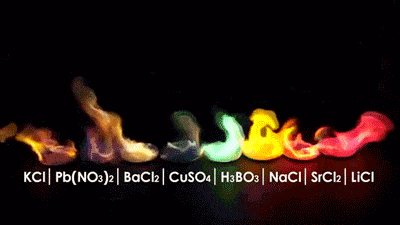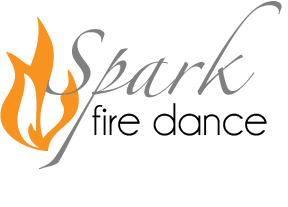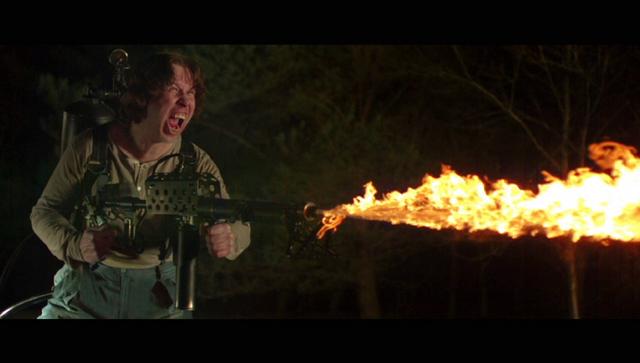 Source: Scientists just discovered a new type of eco-friendly fire
Source: Scientists just discovered a new type of eco-friendly fire
NEWS
Category: Unusual entertainment
Fire performance fuel observations
This article is written for the benefit of other recreational and professional fire performers worldwide.
My name is Dan Miethke. I’ve worked with fire for over 20 years, consulting for both Cirque du Soleil and Franco Dragone during the creation of shows involving fire.
I’ve performed with fire all over the world and had to develop a keen understanding of different fuel availability and safety. I’ve talked to other performers from many countries and looked at what they use.
My conclusion is that the safest fuels regarding exposure / toxicity are the isoparrafin range marketed as ISOPAR by ExxonMobil.
There will be other substitutes for ISOPARs made by regional companies but ISOPARs are well known and used in various industries worldwide.
ISOPAR is available in a range of flash points.
ISOPAR C -8c
ISOPAR E 7c
ISOPAR G 41c
ISOPAR H 54c
ISOPAR L 64c
and upwards to 129c with ISOPAR V.
For the purposes of fire performance ISOPAR E and ISOPAR G should cover all common situations or effect desires.
ISOPAR C might be desired in very cold climates, though with the lower flash point has increased storage risks. ISOPAR L can be used in situations where a combustible fuel (flash point greater than 61c) rather than a flammable fuel is necessary for legal/OH&S requirements.
ISOPAR E will burn/react similar to Colemans, Zippo Lighter Fluid, Essence F etc.
Lighting very quickly, evaporating off props after fuelling, not causing slippery stages, burning on costumes for a few seconds with a heavy prop hit, requiring some extra safety precautions in handling and transport.
ISOPAR G will burn/react similar to Lamp oil, Paraffin, ShellsolT, Kerdan etc.
Longer lasting, takes a few seconds to light, spray off will be a little slippery, wont burn on you if you hit yourself, vapours are not a serious fire hazard during fuelling.
The advantages of ISOPAR G to the other fuels mentioned is it WILL evaporate off props eventually, a few hours to overnight or more depending on temperatures.
It WILL evaporate off stage surfaces, but rather than in a few seconds for ISOPAR E it will take ISOPAR G a few minutes before a fine stage spray will disappear. This advantage of ISOPAR G makes it desirable from a cleanliness and environmental point of view.
AVAILABILITY
The ISOPARs are available in 20L drums from some distributors in some countries, i.e. Australia, but in most countries a 200L drum purchase will be required.
This makes it worthwhile for recreational or domestic performance use. For international performances alternatives will often be required though it is worth noting that various ISOPARs are sold as professional fire fuels in juggling stores worldwide.
SAFETY
A Chemical Exposure Monitoring Report was conducted for the fire act I was performing during my years at Cirque. Personal exposure monitoring of the artistes and technicians was conducted with body mounted devices. The main fuel used was ISOPAR G.
All the personal exposure readings were less than the occupational exposure limits, except for short periods during prop extinguishing.
The report indicates the highest exposures are when props are ‘spun off’ or extinguished, still hot with the fuel vaporising but not combusting. This period holds the largest risk of inhaling a high amount of fuel vapour.
For fuelling I recommend a clear squeeze bottle with measured amounts of the fuel (applicator measuring bottle). This is actually quite easy to figure out for your props and eliminates the need to spin off. With a little practice this can also eliminate stage spray off, reducing slip hazards. Start with 25ml for small wicks, 75ml for large wicks.
For extinguishing simply leave your props wrapped in wet towels after extinguishing and take them somewhere ventilated to air out after a show. Leaving them wrapped during the rest of a performance is also good standard practice to ameliorate a vapour re-ignition.
I have read various reports on isoparrafin exposure over the years and they all seem to indicate quite high levels of exposure are needed for serious effects, with most being reversible on cessation of exposure.
SAFETY OF COLEMANS
Coleman fuel is used widely in the USA. The following are excerpts from various reports or studies I have come across:
“Coleman fuel is a mixture of cyclohexane, nonane, octane, heptane, and pentane.”
“Coleman Fuel is representative of a class of commercially available petroleum-based products that are often marketed under the following names: Amsol 10, Kensol 10, White Gas, VM&P Naphtha, Ozark Trail, Camp Fuel, and Coleman Fuel (brand).“
“These products are complex mixtures of light hydrotreated petroleum distillates containing up to 25% n-hexane, 15% cyclohexane, and less than 0.001% benzene by weight.”
“Repeated exposure to Coleman Fuel and its constituents, such as n-hexane, over a period of weeks to months can result in neuropathy, damage to sensory and motor nerve cells. Effects include burning, numbness, or tingling in the feet, legs or hands, paralysis, and even permanent brain damage. Prolonged exposure may also damage the kidneys, liver, and respiratory system.”
“The 10-hour Time-Weighted-Average Occupational Exposure Limit for n-hexane, which comprises up to 25% of Coleman Fuel, is 50ppm (180 mg/m3). The 8-hour Time-Weighted-Average for n-hexane is 500 ppm (1800 mg/m3).”
Although I have used, and will use Colemans and similar fuels again I do not consider myself a ‚heavy user‘. I believe ongoing exposure due to recreational or repeated long term professional use does pose unnecessary risks with safer substitutes available.
Combustion and Chemical Compounds: the Colour of Chemistry

After Sunset – Modern Laser Art
The power of light and fire to create amazing art!
El Salvador fireball festival
El Salvador’s fireball festival is kind of like a giant snowball fight — but with balls of fire: http://cbc.sh/AcQTiHO
Woman Purposefully Lights Her Parachute on Fire With a Flare Gun While Skydiving to Teach an Important Safety Lesson
Skydiver Brianne Thompson, an instructor at Axis Flight School, lit her parachute on fire mid-flight with a flare gun to teach an important safety lesson about the necessity of backup parachutes. O…
Fighting Fire with Bass
Demonstration of sonic fire extinguisher
Why Firefighters Get More Cancer – The Atlantic
Consumer goods are increasingly made of synthetic materials and coatings. The carcinogens they give off when they burn could be driving high cancer rates among first responders.
Luis Ricardo pega fogo no Ratinho – YouTube
https://www.youtube.com/watch?v=vZuNAAdA6l0
Teaching a TV presenter to fire breathe? Take note fire breathers, thats a really bad idea.
The Human Torch Drone – YouTube
A Human Torch drone lighting up the skies of New York in a promotion for the new Fantastic Four movie.
The stunt was spearheaded by video agency Thinkmodo
What Is Fire?
Why does fire burn? What’s the chemistry and physics of a flame?
Nicely presenting and interesting info.
GoPro: Jamie O’Brien Surfs Teahupoʻo On Fire – YouTube
Flamethrower Versus Fire Extinguisher at 1000 Frames per Second
Lets say you had an uber-expensive Phantom slow motion camera, a flamethrower, and a fire extinguisher at your disposal. What would you do? Well…
Source: Flamethrower Versus Fire Extinguisher at 1000 Frames per Second




